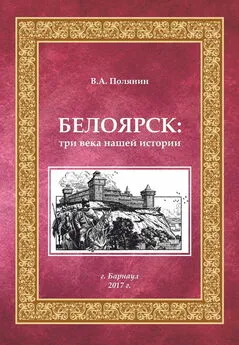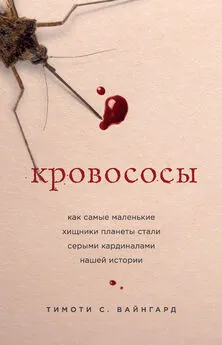Тимоти С Вайнгард - Кровососы [Как самые маленькие хищники планеты стали серыми кардиналами нашей истории] [litres]
- Название:Кровососы [Как самые маленькие хищники планеты стали серыми кардиналами нашей истории] [litres]
- Автор:
- Жанр:
- Издательство:Литагент 5 редакция «БОМБОРА»
- Год:2019
- Город:Москва
- ISBN:978-5-04-100194-0
- Рейтинг:
- Избранное:Добавить в избранное
-
Отзывы:
-
Ваша оценка:
Тимоти С Вайнгард - Кровососы [Как самые маленькие хищники планеты стали серыми кардиналами нашей истории] [litres] краткое содержание
Кровососы [Как самые маленькие хищники планеты стали серыми кардиналами нашей истории] [litres] - читать онлайн бесплатно ознакомительный отрывок
Интервал:
Закладка:
Hawkins, Mike. Social Darwinism in European and American Thought, 1860–1945: Nature as Model and Nature as Threat. New York: Cambridge University Press, 1997.
Hayes, J. N. The Burdens of Disease: Epidemics and Human Response in Western History. New Brunswick, NJ: Rutgers University Press, 1998.
Hickey, Donald R. The War of 1812: A Forgotten Conflict. Champaign IL: University of Illinois Press, 2012.
Hindley, Geoffrey. The Crusades: Islam and Christianity in the Struggle for World Supremacy. London: Constable & Robinson, 2003.
Holck, Alan R. «Current Status of the Use of Predators, Pathogens and Parasites for Control of Mosquitoes». Florida Entomologist 71:4 (1988): 537–546.
Holt, Frank L. Into the Land of Bones: Alexander the Great in Afghanistan. Berkeley: University of California Press, 2012.
Hong, Sok Chul. «Malaria and Economic Productivity: A Longitudinal Analysis of the American Case». Journal of Economic History 71:3 (2011): 654–671.
Honigsbaum, Mark. The Fever Trail: In Search of the Cure for Malaria. London: Pan MacMillan, 2002.
Horwitz, Tony. A Voyage Long and Strange: On the Trail of Vikings, Conquistadors, Lost Colonists, and Other Adventurers in Early America. New York: Picador, 2008.
Hosler, John D. The Siege of Acre, 1189–1191: Saladin, Richard the Lionheart, and the Battle That Decided the Third Crusade. New Haven: Yale University Press, 2018.
Hoyos, Dexter. Hannibal: Rome’s Greatest Enemy. Exeter: Bristol Phoenix Press, 2008.
Hughes, J. Donald. Environmental Problems of the Greeks and Romans: Ecology in the Ancient Mediterranean. 2nd ed. Baltimore: Johns Hopkins University Press, 2014.
Humphreys, Margaret. Intensely Human: The Health of the Black Soldier in the American Civil War. Baltimore: Johns Hopkins University Press, 2008.
Humphreys, Margaret. Malaria: Poverty, Race, and Public Health in the United States. Baltimore: Johns Hopkins University Press, 2001.
Humphreys, Margaret. Marrow of Tragedy: The Health Crisis of the American Civil War. Baltimore: Johns Hopkins University Press, 2013.
Humphreys, Margaret. Yellow Fever and the South. New Brunswick, NJ: Rutgers University Press, 1992.
Hume, Jennifer C. C., Emily J. Lyons, and Karen P. Day. «Malaria in Antiquity: A Genetics Perspective». World Archaeology 35:2 (October 2003): 180–192.
Hunt, Patrick N. Hannibal. New York: Simon & Schuster, 2017.
Jackson, Peter. The Mongols and the West, 1221–1410. New York: Routledge, 2005.
Jones, Richard. Mosquito. London: Reaktion Books, 2012.
Jones, W. H. S. Malaria: A Neglected Factor in the History of Greece and Rome. Cambridge: Macmillan & Bowes, 1907.
Jordan, Don, and Michael Walsh. White Cargo: The Forgotten History of Britain’s White Slaves in America. New York: New York University Press, 2008.
Jukes, Thomas H. «DDT: The Chemical of Social Change». Toxicology 2:4 (December 1969): 359–370.
Karlen, Arno. Man and Microbes: Disease and Plagues in History and Modern Times. New York: Simon & Schuster, 1996.
Keegan, John. The American Civil War. New York: Vintage, 2009.
Keegan, John. The Mask of Command: Alexander the Great, Wellington, Ulysses S. Grant, Hitler, and the Nature of Leadership. New York: Penguin Books, 1988.
Keeley, Lawrence H. War before Civilization: The Myth of the Peaceful Savage. Oxford: Oxford University Press, 1996.
Keith, Jeanette. Fever Season: The Story of a Terrifying Epidemic and the People Who Saved a City. New York: Bloomsbury Press, 2012.
Kinkela, David. DDT and the American Century: Global Health, Environmental Politics, and the Pesticide That Changed the World. Chapel Hill: University of North Carolina Press, 2011.
Kiple, Kenneth F., and Stephen V. Beck, eds. Biological Consequences of the European Expansion, 1450–1800. Aldershot, UK: Ashgate, 1997.
Kotar, S. L., and J. E. Gessler. Yellow Fever: A Worldwide History. Jefferson, NC: McFarland, 2017.
Kozubek, James. Modern Prometheus: Editing the Human Genome with CRISPR-CAS9. Cambridge: Cambridge University Press, 2016.
Lancel, Serge. Hannibal. Oxford, UK: Blackwell Publishers, 1999.
Larson, Gregor, et al. «Current Perspectives and the Future of Domestication Studies». Proceedings of the National Academy of Sciences of the United States of America 111:17 (April 2014): 6139–6146.
Ledford, Heidi. «CRISPR, the Disruptor». Nature 522 (June 2015): 20–24.
Leone, Bruno. Disease in History. San Diego: ReferencePoint Press, 2016.
Levine, Myron M., and Patricia M. Graves, eds. Battling Malaria: Strengthening the U. S. Military Malaria Vaccine Program. Washington, DC: National Academies Press, 2006.
Levy, Elinor, and Mark Fischetti. The New Killer Diseases: How the Alarming Evolution of Germs Threatens Us All. New York: Crown, 2003.
Litsios, Socrates. The Tomorrow of Malaria. Wellington, NZ: Pacific Press, 1996.
Liu, Weimin, et al. «African Origin of the Malaria Parasite Plasmodium vivax». Nature Communications 5 (2014).
Lockwood, Jeffrey A. Six-Legged Soldiers: Using Insects as Weapons of War. Oxford: Oxford University Press, 2010.
Lovett, Richard A. Did the Rise of Germs Wipe Out the Dinosaurs? National Geographic News (January 2008). https://news.nationalgeographic.com/news/2008/01/080115-dino-diseases.html.
Mack, Arien, ed. In Time of Plague: The History and Social Consequences of Lethal Epidemic Disease. New York: New York University Press, 1991.
MacAlister, V. A. The Mosquito War. New York: Forge, 2001.
MacNeal, David. Bugged: The Insects Who Rule the World and the People Obsessed with Them. New York: St. Martin’s Press, 2017.
Macpherson, W. G. History of the Great War Based on Official Documents: Medical Services. Diseases of the War, vol. 2. London: HMSO, 1923.
Macpherson, W. G., et al, eds. The British Official Medical History of the Great War. 2 vols. London: HMSO, 1922.
Madden, Thomas F. The Concise History of the Crusades. Lanham, MD: Rowman & Littlefield, 2013.
Major, Ralph H. Fatal Partners, War and Disease. New York: Scholar’s Bookshelf, 1941.
Mancall, Peter C., ed. Envisioning America: English Plans for the Colonization of North America, 1580–1640: A Brief History with Documents. New York: Bedford-St. Martin’s Press, 2017.
Manguin, Sylvie, Pierre Carnevale, and Jean Mouchet. Biodiversity of Malaria in the World. London: John Libbey Eurotext, 2008.
Mann, Charles C. 1491: New Revelations of the Americas before Columbus. New York: Vintage, 2006.
Mann, Charles C. 1493: Uncovering the New World Columbus Created. New York: Alfred A. Knopf, 2011.
Markel, Howard. When Germs Travel: Six Major Epidemics That Have Invaded America and the Fears They Unleashed. New York: Pantheon, 2004.
Marks, Robert B. Tigers, Rice, Silk, and Silt: Environment and Economy in Late Imperial South China. Cambridge: Cambridge University Press, 1998.
Martin, Sean. A Short History of Disease: Plagues, Poxes and Civilisations. Harpenden, UK: Oldcastle Books, 2015.
Martin, Thomas, and Christopher W. Blackwell. Alexander the Great: The Story of an Ancient Life. Cambridge: Cambridge University Press, 2012.
Masterson, Karen M. The Malaria Project: The U. S. Government’s Secret Mission to Find a Miracle Cure. New York: New American Library, 2014.
Max, D. T. «Beyond Human: how humans are shaping our own evolution». National Geographic (April 2017): 40–63.
Mayor, Adrienne. Greek Fire, Poison Arrows, and Scorpion Bombs: Biological and Chemical Warfare in the Ancient World. New York: Overlook Duckworth, 2009.
McCandless, Peter. «Revolutionary Fever: Disease and War in the Lower South, 1776–1783». Transactions of the American Clinical and Climatological Association 118 (2007): 225–249.
McCandless, Peter. Slavery, Disease, and Suffering in the Southern Lowcountry. Cambridge: Cambridge University Press, 2011.
McGuire, Robert A., and Philip R. P. Coelho. Parasites, Pathogens, and Progress: Diseases and Economic Development. Cambridge: MIT Press, 2011.
McLynn, Frank. Genghis Khan: His Conquests, His Empire, His Legacy. Cambridge, MA: Da Capo Press, 2016.
McNeill, J. R. Mosquito Empires: Ecology and War in the Greater Caribbean, 1620–1914. Cambridge: Cambridge University Press, 2010.
McNeill, William H. Plagues and Peoples. New York: Anchor, 1998.
McPherson, James M. Battle Cry of Freedom: The Civil War Era. Oxford: Oxford University Press, 1988.
McWilliams, James E. American Pests: The Losing War on Insects from Colonial Times to DDT. New York: Columbia University Press, 2008.
Meier, Kathryn Shively. Nature’s Civil War: Common Soldiers and the Environment in 1862 Virginia. Chapel Hill: University of North Carolina Press, 2013.
Meiners, Roger, Pierre Desrochers, and Andrew Morriss, eds. Silent Spring at 50: The False Crises of Rachel Carson. Washington, DC: Cato Institute, 2012.
Middleton, Richard. Pontiac’s War: Its Causes, Course and Consequences. New York: Routledge, 2007.
Mitchell, Piers D. Medicine in the Crusades: Warfare, Wounds and the Medieval Surgeon. Cambridge: Cambridge University Press, 2004.
Moberly, F. J. The Campaign in Mesopotamia, 1914–1918. Vol. 4. London: HMSO, 1927.
Moeller, Susan D. Compassion Fatigue: How the Media Sell Disease, Famine, War and Death. New York: Routledge, 1999.
Monaco, C. S. The Second Seminole War and the Limits of American Aggression. Baltimore: Johns Hopkins University Press, 2018.
Murphy, Jim. An American Plague: The True and Terrifying Story of the Yellow Fever Epidemic of 1793. New York: Clarion Books, 2003.
Nabhan, Gary Paul. Why Some Like It Hot: Food, Genes, and Cultural Diversity. Washington, DC: Island Press, 2004.
Nicholson, Helen J., ed. The Chronicle of the Third Crusade: The Itinerarium Peregrinorum et Gesta Regis Ricardi. London: Routledge, 2017.
Nikiforuk, Andrew. The Fourth Horseman: A Short History of Epidemics, Plagues, Famine and Other Scourges. New York: M. Evans, 1993.
Norrie, Philip. A History of Disease in Ancient Times: More Lethal Than War. New York: Palgrave Macmillan, 2016.
O’Brien, John Maxwell. Alexander the Great: The Invisible Enemy: A Biography. New York: Routledge, 1992.
O’Connell, Robert L. The Ghosts of Cannae: Hannibal and the Darkest Hour of the Roman Republic. New York: Random House, 2011.
Officer, Charles, and Jake Page. The Great Dinosaur Extinction Controversy. Boston: Addison-Wesley, 1996.
Overy, Richard. Why the Allies Won. London: Pimlico, 1996.
Packard, Randall M. The Making of a Tropical Disease: A Short History of Malaria. Baltimore: Johns Hopkins University Press, 2007.
Packard, Randall M. «Roll Back Malaria, Roll in Development?»: Reassessing the Economic Burden of Malaria». Population and Development Review 35:1 (2009): 53–87.
Paice, Edward. Tip and Run: The Untold Tragedy of the Great War in Africa. London: Weidenfeld & Nicolson, 2007.
Patterson, David K. «Typhus and Its Control in Russia, 1870–1940». Medical History 37 (1993): 361–381.
Patterson, David K. «Yellow Fever Epidemics and Mortality in the United States, 1693–1905». Social Science & Medicine 34:8 (1992): 855–865.
Patterson, Gordon. The Mosquito Crusades: A History of the American Anti-Mosquito Movement from the Reed Commission to the First Earth Day. New Brunswick, NJ: Rutgers University Press, 2009.
Pendergrast, Mark. Uncommon Grounds: The History of Coffee and How It Transformed Our World. New York: Basic Books, 1999.
Perry, Alex. Lifeblood: How to Change the World One Dead Mosquito at a Time. New York: PublicAffairs, 2011.
Petriello, David R. Bacteria and Bayonets: The Impact of Disease in American Military History. Oxford: Casemate, 2016.
Читать дальшеИнтервал:
Закладка:
![Обложка книги Тимоти С Вайнгард - Кровососы [Как самые маленькие хищники планеты стали серыми кардиналами нашей истории] [litres]](/books/1072082/timoti-s-vajngard-krovososy-kak-samye-malenkie-h.webp)
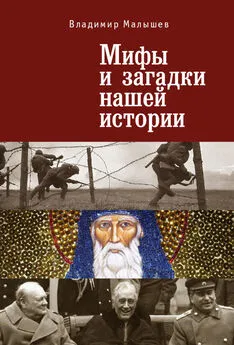
![Дэн Бюттнер - Где живет счастье [Правила жизни самых счастливых людей планеты] [litres]](/books/1065925/den-byuttner-gde-zhivet-schaste-pravila-zhizni-samyh.webp)
![Келси Миллер - Друзья. Больше, чем просто сериал [История создания самого популярного ситкома в истории] [litres]](/books/1073323/kelsi-miller-druzya-bolshe-chem-prosto-serial-is.webp)
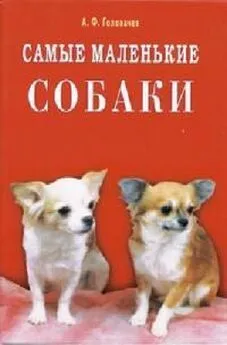
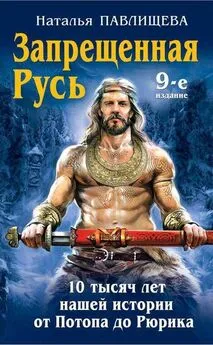
![Медина Мирай - Зазеркалье Нашей Реальности [litres]](/books/1143348/medina-miraj-zazerkale-nashej-realnosti-litres.webp)
